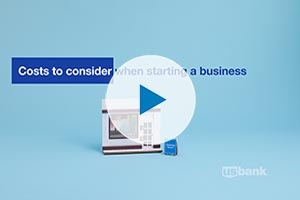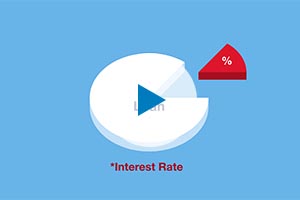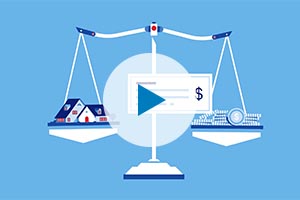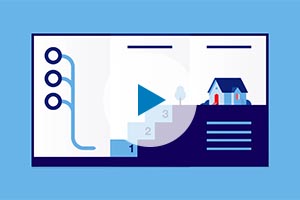Investing in physical business assets can push your business forward, but only if your partners, team and lenders are on board. Learn how to work with them on a successful capital expenditure plan.
Over the past five years, business owners have become more optimistic about the economy.
In 2018, only 11 percent of business owners said economic uncertainty was their top concern (down from 26 percent in 2014), according to the most recent U.S. Bank Small Business Survey. This owner optimism, plus consumer confidence reaching an 18-year high, could mean increased consumer purchases compared to previous years.
That means this year may be the right time to consider capital expenditures — buying or maintaining fixed assets such as equipment, buildings or property — as a means to move your business forward. Consider this especially if you’ve seen an uptick in product demand or opportunities for growth into new markets. Different from operational expenses that are purchased and used in the same tax year, capital investments should benefit your business for many years to come.
Capital Expenditures can be a good option for expanding, but as with any business decision there are key considerations and discussions to have during each phase of the process.
1. What to discuss with business partners and stakeholders
A business expansion plan: The development of a business expansion plan is key for capital expenditures. Meet with business partners and key stakeholders early on to discuss the overall objectives and outline what types of capital investments are necessary to take your business to the next level. A plan should include not only the business’s current state (facilities, product lines, daily operations, number of employees, etc.) but also describe the proposed expansion in detail:
- Equipment or technology upgrades
- New infrastructure or property
- Expansion-related costs
- Projected profits
- New product lines or customer bases
This document will not only make sure all stakeholders are on the same page, but it will also come in handy if you seek out a business loan to help fund an expansion.
Each asset’s long-term profitability: Compare a capital expenditure’s return on investment against the cost of financing it to ensure that it will be profitable in the long run. An ROI that’s greater than the required financing adds value to your business. Calculate the weighted average cost of capital (WACC) with the help of an advisor or CPA, which assesses an organization’s current debt and equity to determine if investment in new projects/assets will be profitable compared with its financing.
An expansion budget: The next step is to establish a separate budget for any capital expenditures. A separate budget can make the investment’s ROI clearer and streamlines the tax reporting. In the tax year after a capital expenditure purchase is made, the asset is accounted for on the organization’s income statement and factored in as asset depreciation. This depreciation is spread out over the expected life of the asset.
Leasing as an option: You also may want to consider whether it’s more advantageous to lease or own – especially if equipment purchasing is involved and if the equipment could quickly become obsolete (such as computers). Leasing could be cheaper in the short-term and allow you to test out and update equipment regularly. However, purchasing equipment can be more affordable over time and counts toward your balance sheet.
Tax implications: Since capital expenditures are considered investments, they are assessed differently than operational expenses for tax purposes. There are strict rules as to what qualifies as a capital expenditure and how write-offs can be claimed. A capital asset cannot be written off at the time of purchase because the cost is spread over the asset’s expected lifecycle. Asset yearly depreciation is tax deductible and the assets cost will likely pay for itself over the course of its lifecycle.
2. What to discuss with lenders
Choosing a loan type: Term loans can be short- or long-term loans used to finance larger purchases such as vehicles and equipment. Most term loans are set to a specified amount and can have payment terms up to 80 months, depending on the type of loan. Small Business Administration (SBA) small business loans are low-interest loans issued by banks and backed by the SBA. SBA-backed loans can be an attractive option because of their favorable interest-rate and repayment terms. However, a drawback is a time-consuming loan application process with strict guidelines.
Preparing for a loan: Lenders look at your business’s credit history, current business debts and assets and cash flow. This information helps a lender determine if you’re able to comfortably repay the loan without jeopardizing the business’s working capital. A lender will also want to review tax returns and financial documents to gauge the overall health of the business. This includes balance sheets, profit and loss statements and cash flow statements. Be prepared to answer questions about your business’s debt-to-income ratio as well as earnings before interest, taxes, depreciation and amortization (EBITDA). Also be ready to provide the expansion plan that outlines your strategy for growth and the role of a capital expenditure.
Questions to ask your lender: When discussing loan options with a lender, ask about specific details to make sure you’re getting a loan that meets your business’s needs, including:
- What are the loan’s minimum requirements? By asking this early in the process, you’ll make sure your business qualifies for the loans offered by your lender.
- How long does it take to process the loan? Seeking a loan early in the expansion process can give you more breathing room if a loan takes time.
- What are the interest rates and fees? This impacts the overall cost of the loan throughout its duration.
- Is collateral required? You’ll want to find out what’s expected in lieu of payment if you can’t repay the loan in full.
3. What to discuss with employees
Communicate any changes: As your business prepares for growth, it’s important to convey any key changes to employees. If the capital expenditures will result in additional facilities, new product lines or an increase in hiring, communicate regularly with staff through each step of the process.
Listen to their questions: As you communicate organization growth (and subsequent changes) to employees, they may have questions. Listen to concerns and make employees feel like a part of the process by addressing their questions directly and actively seeking their feedback.
Focus on culture: As you grow and potentially hire additional staff, build enthusiasm for the team’s success by cultivating the mission and purpose that brought your original staff on board. If capital expenditures result in rapid growth, it may be tempting to hire quickly to keep pace with demand. However, it’s important to make time to recruit and hire talent that is aligned with your organization’s culture to ensure they are the right fit and invested in your success. Also consider developing effective onboarding programs so all staff members are up to speed on new technologies, systems and procedures.
4. What to discuss with customers
Announce changes to service: Business growth can also be an opportune time to focus on developing great customer service. If capital expansion projects will have a direct effect on product supply, notify your customers of changes quickly. Also, work with staff to fix operational issues — such as ordering systems — that impact customers directly. This may also be the time to revisit customer service standards to ensure all employees properly address customer concerns and issues.
Ask for input: As your organization evolves and your customer base grows, you may want to consider actively seeking customer feedback to continually improve products, services and operations, which could lead to greater customer satisfaction.
Moving your business forward
Taking a business to the next level can be an intensive but exciting process. By taking the time to plan out each stage of a capital expenditure, from developing an expansion plan, to meeting with lenders, to outlining the business’s growth with employees and customers, the journey can move along much more smoothly.
Learn more about Small Business Administration (SBA) loans and how they can help finance the expansion of your business.



















































































































































